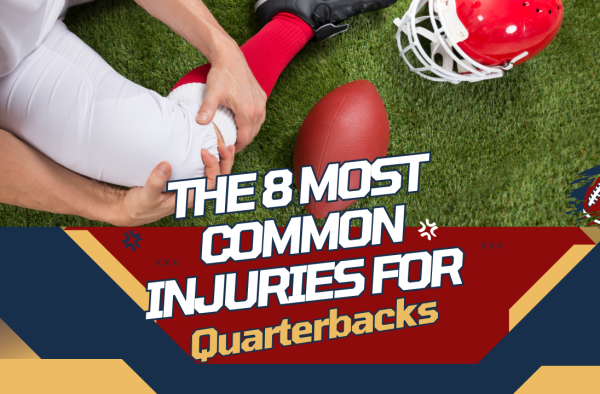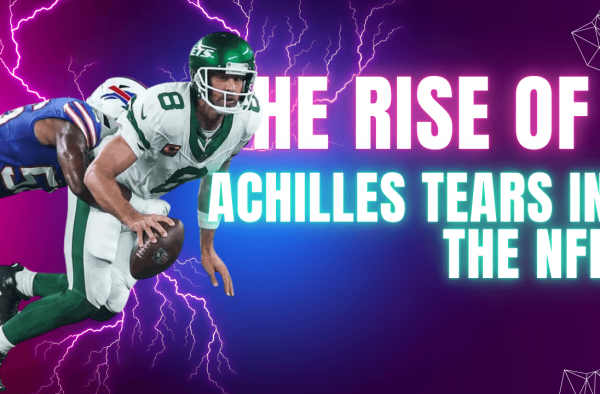In the physically demanding world of the NFL, all positions are vulnerable to injury, and long snappers are no exception. Though often underappreciated and not as high-profile as quarterbacks, wide receivers, or defensive linemen, long snappers are integral to the success of special teams. They ensure accurate snaps for punts, field goals, and extra points, often under immense pressure. Given the nature of their role, long snappers face a range of injuries, many of which are unique to their position. This blog will explore some of the most common injuries faced by NFL long snappers and how they impact their careers.
Shoulder Injuries
Shoulder injuries are among the most common and severe injuries for long snappers. Due to the repetitive overhead motion involved in snapping, the shoulder joint, which is inherently unstable, is at high risk for injury. Common shoulder injuries include rotator cuff tears, labrum tears, and shoulder dislocations. These injuries can be debilitating and may require surgery, followed by a lengthy rehabilitation period.
Rotator Cuff Tears: The rotator cuff is a group of muscles and tendons that stabilize the shoulder joint. Over time, the repetitive snapping motion can cause wear and tear on these tendons, leading to partial or complete tears. Symptoms include pain, weakness, and limited range of motion, making it difficult to snap the ball accurately. Treatment can range from rest and physical therapy to surgery in more severe cases.
Labrum Tears: The labrum is a ring of cartilage that surrounds the shoulder socket and helps stabilize the joint. Long snappers are at risk of tearing their labrum, especially during high-impact plays. A torn labrum can cause pain, instability, and a catching sensation in the shoulder. Like rotator cuff tears, labrum injuries may require surgical intervention and a long recovery process.
Shoulder Dislocations: The repetitive motion and physical contact that long snappers endure can also lead to shoulder dislocations. When the upper arm bone pops out of the shoulder socket, it can cause severe pain and instability. Repeated dislocations may require surgery to prevent future occurrences and restore stability to the shoulder joint.
Elbow Injuries
Elbow injuries are another common problem for long snappers due to the strain placed on the joint during snapping. Conditions such as tendinitis (inflammation of the tendons), ulnar collateral ligament (UCL) injuries, and even fractures can occur.
Tendinitis: Long snappers frequently develop tendinitis in the elbow due to overuse. This condition is characterized by inflammation of the tendons that attach muscle to bone, causing pain and tenderness around the elbow joint. Tendinitis can be managed with rest, anti-inflammatory medications, and physical therapy, but it can become a chronic issue if not properly treated.
UCL Injuries: The UCL is a ligament on the inner side of the elbow that provides stability to the joint. Repetitive snapping can cause strain or tears in the UCL, leading to pain, weakness, and instability. Severe UCL injuries may require surgery, such as Tommy John surgery, which is more commonly associated with baseball pitchers but can also affect long snappers.
Elbow Fractures: Although less common, elbow fractures can occur in long snappers due to high-impact collisions or falls during play. Fractures require immediate medical attention and may necessitate surgery to repair the bone, followed by a period of immobilization and rehabilitation.
Back Injuries
Long snappers are particularly susceptible to back injuries due to the constant bending and twisting motion required to snap the ball accurately. The lower back, in particular, is at risk for injuries such as muscle strains, herniated discs, and sciatica.
Muscle Strains: Bending over repeatedly to snap the ball can lead to muscle strains in the lower back. These strains occur when the muscles are stretched or torn, resulting in pain, stiffness, and difficulty moving. Rest, ice, and physical therapy can help alleviate symptoms, but chronic back issues can significantly impact a long snapper’s performance.
Herniated Discs: The spine is made up of vertebrae separated by discs that act as cushions. Repetitive bending and twisting can cause the outer layer of a disc to tear, allowing the inner gel-like substance to protrude. This condition, known as a herniated disc, can compress nearby nerves, leading to pain, numbness, and weakness in the back and legs. Herniated discs often require a combination of rest, physical therapy, and, in severe cases, surgery to relieve symptoms.
Sciatica: Sciatica is a condition in which the sciatic nerve, which runs from the lower back down the legs, becomes compressed or irritated. This can result in sharp, shooting pain, numbness, and tingling in the lower back and legs. Long snappers may develop sciatica due to the repetitive motions and physical demands of their position. Treatment typically involves rest, physical therapy, and anti-inflammatory medications, but severe cases may require surgery.
Knee Injuries
Knee injuries are a concern for all NFL players, and long snappers are no exception. The constant squatting motion, combined with the physical contact during games, can lead to injuries such as anterior cruciate ligament (ACL) tears, meniscus tears, and patellar tendinitis.
ACL Tears: The ACL is one of the major ligaments that stabilize the knee joint. Long snappers are at risk of tearing their ACL during sudden changes in direction, awkward landings, or collisions with other players. ACL tears are serious injuries that often require surgery and a lengthy rehabilitation process, potentially sidelining a player for an entire season.
Meniscus Tears: The meniscus is a piece of cartilage in the knee that acts as a cushion between the thigh bone and shinbone. Long snappers are vulnerable to meniscus tears due to the repetitive squatting and twisting motions required by their position. Symptoms include pain, swelling, and limited range of motion. Treatment options range from rest and physical therapy to surgery, depending on the severity of the tear.
Patellar Tendinitis: Also known as “jumper’s knee,” patellar tendinitis is an overuse injury that affects the tendon connecting the kneecap to the shinbone. Long snappers may develop patellar tendinitis due to the repetitive stress placed on the knee joint during snapping. Symptoms include pain, swelling, and stiffness in the knee. Rest, ice, and physical therapy can help manage symptoms, but chronic cases may require more advanced treatments such as platelet-rich plasma (PRP) injections or surgery.
Hand and Finger Injuries
Given that snapping the ball is the primary responsibility of a long snapper, injuries to the hands and fingers are common. These injuries can range from minor sprains and dislocations to fractures and ligament tears.
Sprains and Dislocations: Long snappers often experience sprains and dislocations of the fingers and thumbs due to the forceful contact with the football and opposing players. These injuries can be painful and may affect a player’s ability to grip and snap the ball accurately. Treatment typically involves splinting, rest, and physical therapy, but severe dislocations may require surgery.
Fractures: Hand and finger fractures are also a risk for long snappers, especially during high-impact plays or collisions with other players. Fractures require immediate medical attention and may necessitate surgery to realign the bones, followed by a period of immobilization and rehabilitation.
Ligament Tears: Long snappers can also tear ligaments in their hands and fingers due to the repetitive stress and forceful contact involved in snapping. Ligament tears can cause pain, instability, and difficulty gripping the ball. Treatment may involve splinting, physical therapy, and, in some cases, surgery to repair the damaged ligaments.
Concussions
While long snappers are not typically involved in high-speed collisions like other positions, they are still at risk of concussions, especially during punt and field goal attempts when opposing players try to block the snap. Concussions can occur when a long snapper is hit in the head or when their head hits the ground during a tackle.
Symptoms and Treatment: Concussion symptoms can range from mild to severe and may include headaches, dizziness, confusion, memory loss, and sensitivity to light and noise. It is crucial for concussions to be properly diagnosed and managed to prevent long-term complications. Treatment typically involves rest and gradual return to play under medical supervision.
Long snappers play a crucial role in the success of NFL teams, yet their contributions often go unnoticed until an injury occurs. From shoulder and elbow injuries to back, knee, and hand injuries, long snappers face a variety of challenges that can impact their performance and careers. Proper training, injury prevention strategies, and prompt medical attention are essential for long snappers to maintain their health and longevity in the NFL. Despite the risks, long snappers continue to perform their duties with precision and resilience, ensuring that special teams operations run smoothly for their teams.







